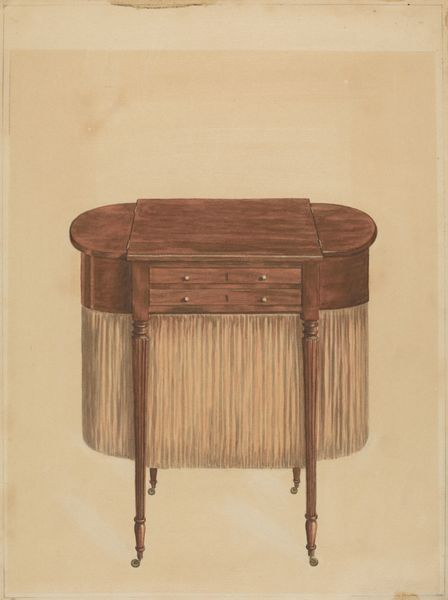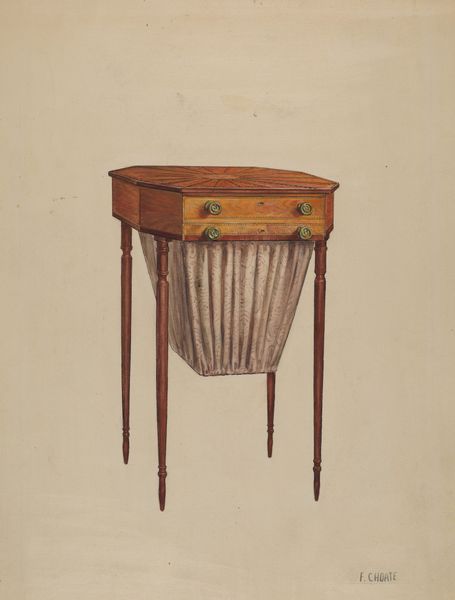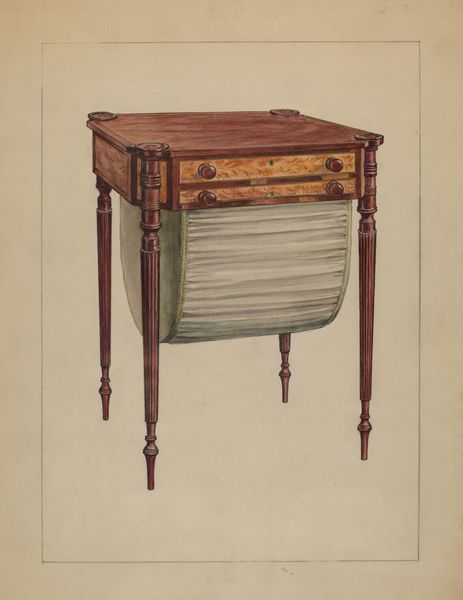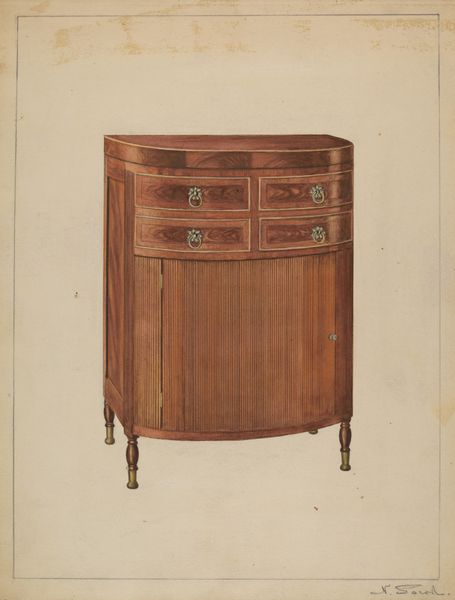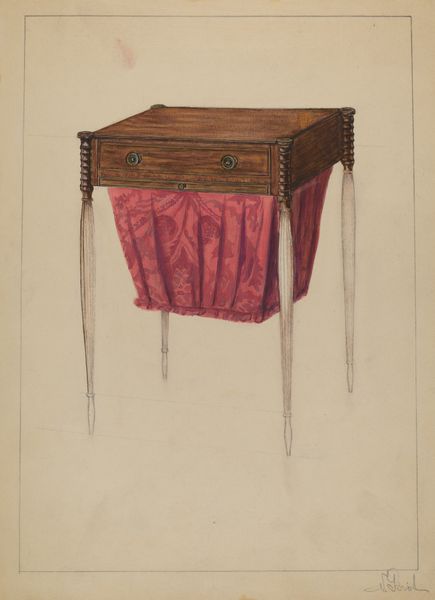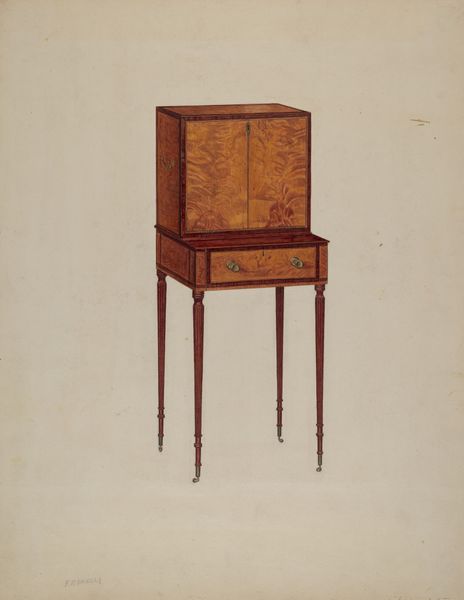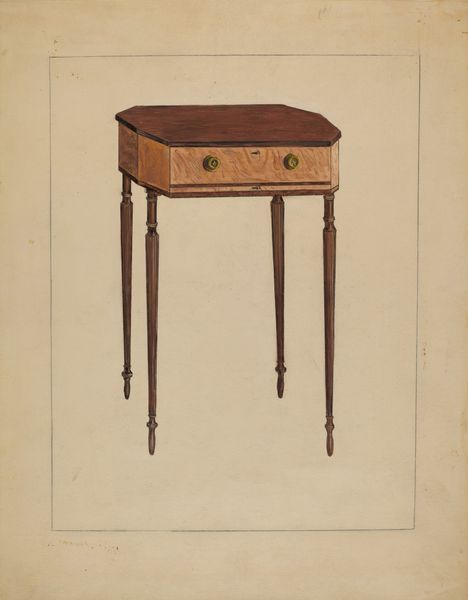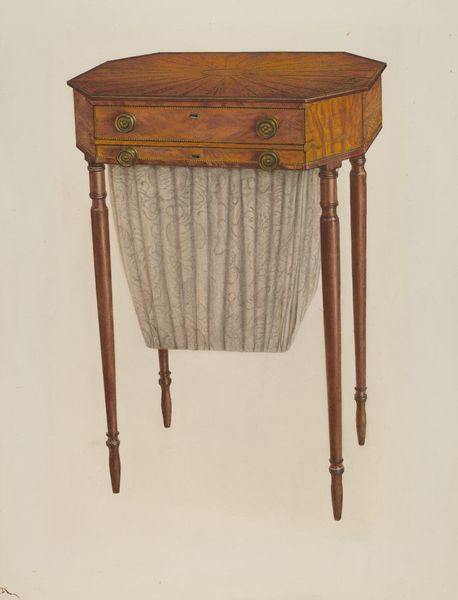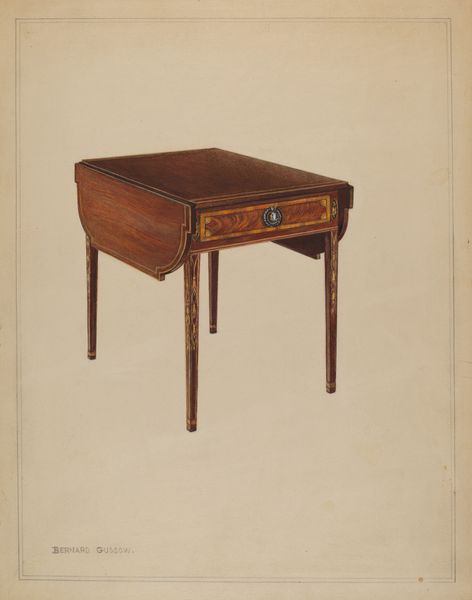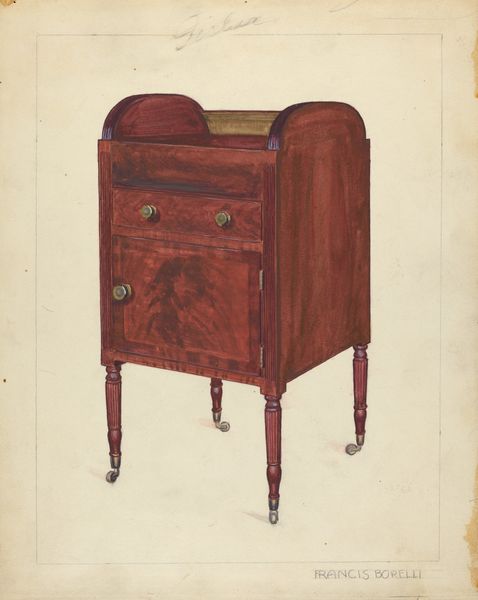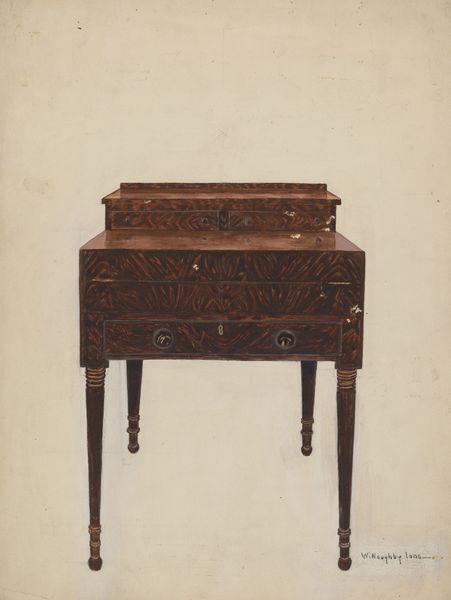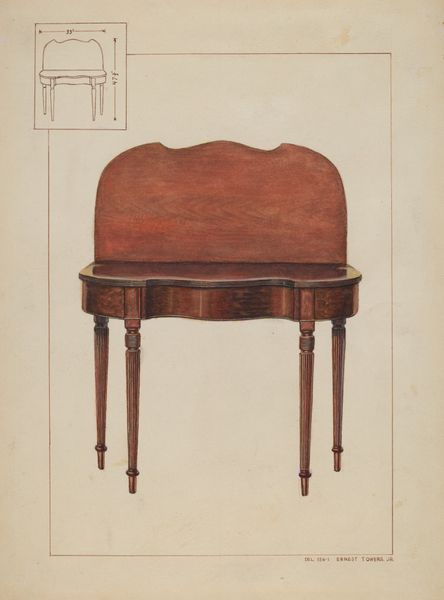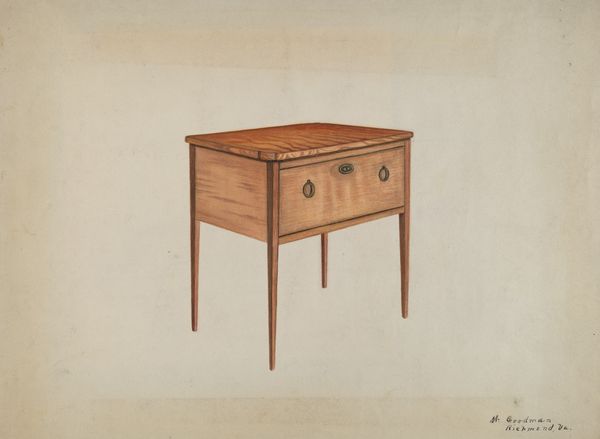
drawing, mixed-media, paper, watercolor
#
drawing
#
mixed-media
#
paper
#
watercolor
#
watercolour illustration
#
watercolor
#
realism
Dimensions: overall: 30.5 x 22.4 cm (12 x 8 13/16 in.)
Copyright: National Gallery of Art: CC0 1.0
Editor: Here we have Ferdinand Cartier's "Sewing Table," a mixed-media drawing from the late 1930s or early 40s. There's something so quaint and domestic about it, a stark contrast to today’s mass-produced furniture. What catches your eye in this work? Curator: Well, seeing a piece like this, ostensibly a simple depiction of a sewing table, through a critical lens immediately raises questions about labor and gender. This isn't just an image of furniture; it’s a representation of domesticity, a space traditionally assigned to women. Do you think the artist was making a conscious statement? Editor: Hmm, I hadn’t considered that. Cartier was a man, wasn't he? Does his perspective as a male artist influence the way the subject is depicted? Curator: Precisely. It is fruitful to question the male gaze when viewing domestic scenes. Consider the context: was sewing seen as a creative outlet, or as a symbol of women's confinement to the home? The medium itself - watercolour and drawing - lends a delicate, almost fragile quality. How might that inform our interpretation? Editor: I guess the delicacy could suggest both the fragility of domestic life, or maybe it's sentimentalising it? The little wheels make it look quite mobile too; that's intriguing. Curator: Mobility is key. Could it represent the limited sphere in which women were allowed to move and act? It makes one ponder what this table symbolizes about women's roles during that time period. Editor: This makes me see so much more than just a piece of furniture; it opens up conversations about women's history and the cultural significance of everyday objects. Curator: Exactly! Engaging with art in this way allows us to unearth the social narratives embedded within the image, challenging traditional readings and prompting critical thought. I’m very grateful we got to talk about it.
Comments
No comments
Be the first to comment and join the conversation on the ultimate creative platform.
